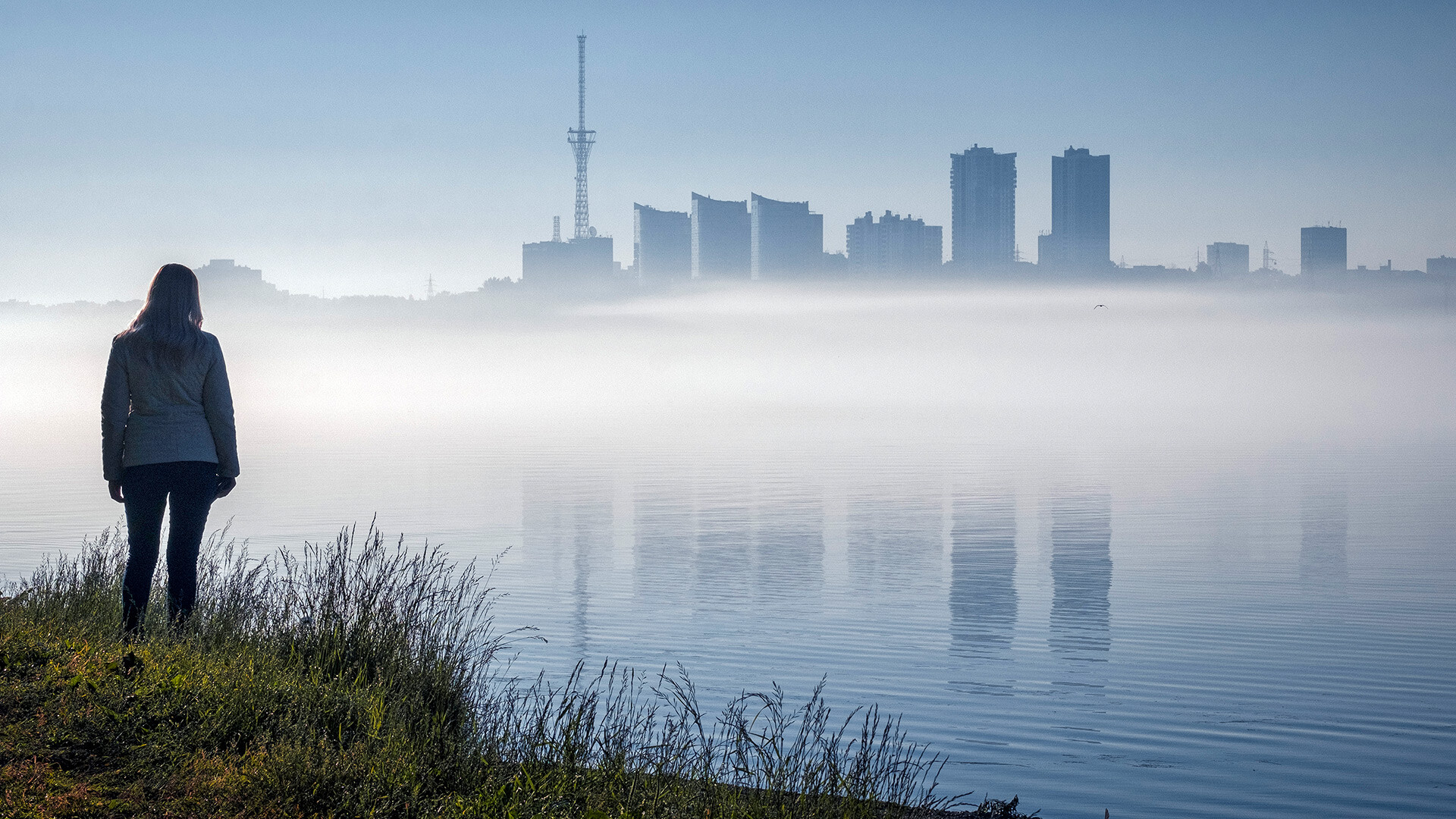
Perm. The morning over the Kama river was extremely foggy. After 6 o'clock, the characteristic features of a big city began to appear on the other side of the river.
Andrey Chizh/Getty Images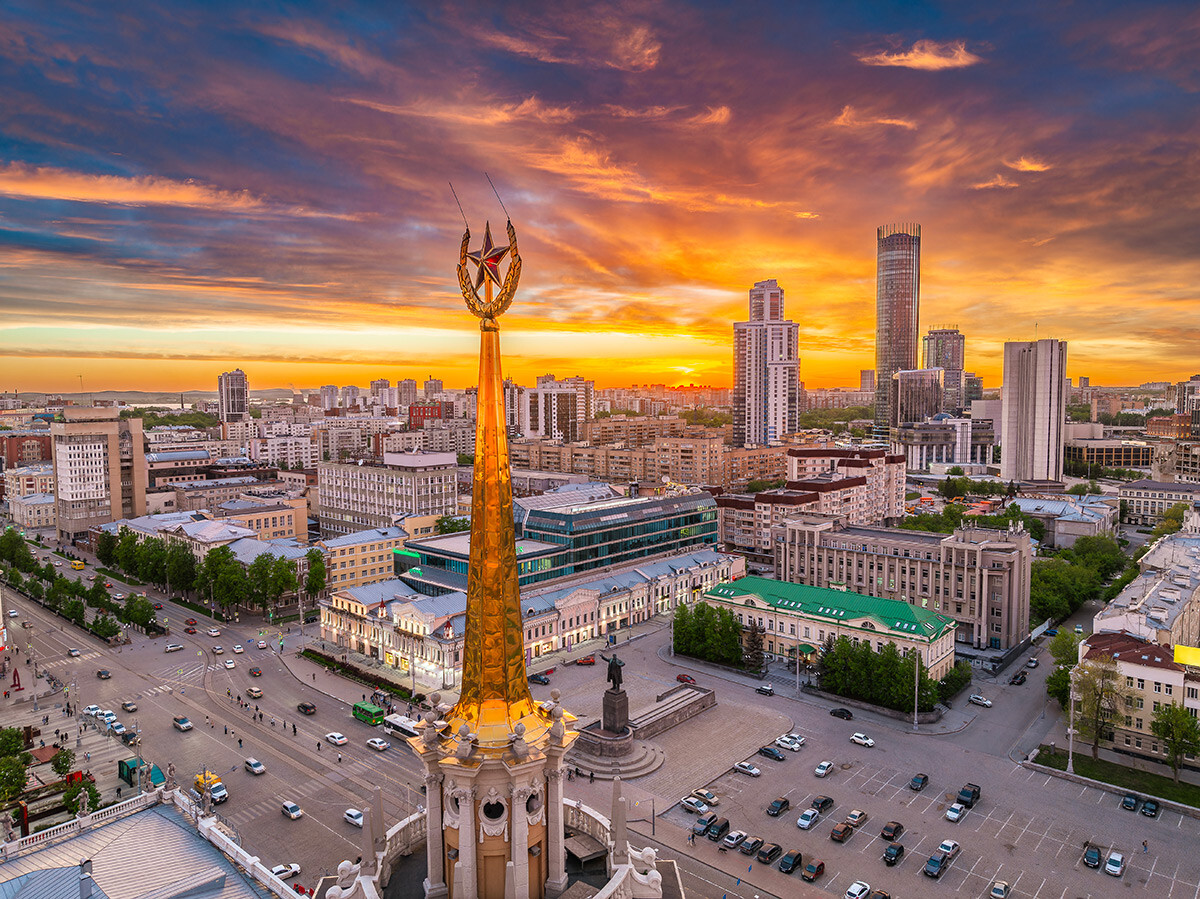
Central square and Yekaterinburg City towers at summer evening.
Dmitry Potashkin/Getty ImagesThe city is considered the capital of the Urals. It was founded in 1723 by Peter the Great's decree and was named in the honor of his wife, Empress Catherine I. Until the end of the 19th century, it was there that most of the coins of the Russian Empire were minted.
Today, Yekaterinburg is a city steeped in heavy engineering. Its architectural appearance is largely formed by buildings in the style of Soviet constructivism. Back in 1991, the only subway in the Urals was opened there (check out our handy guide on what to do in Yekaterinburg in winter).
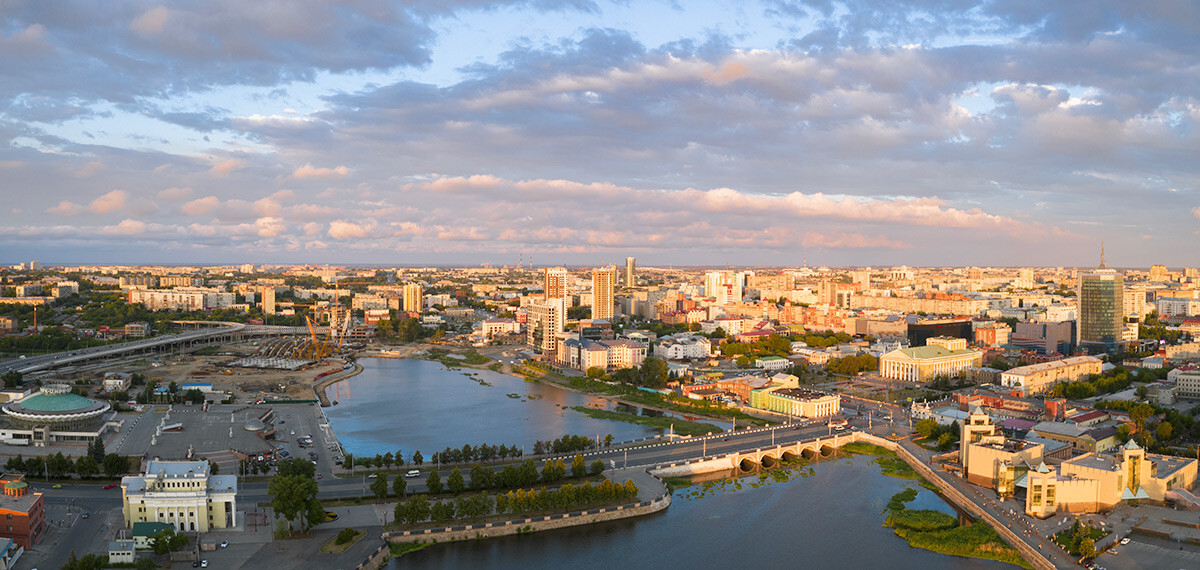
South Ural capital of Chelyabinsk.
Maria Kuzkina/Getty ImagesFounded in 1736, the city has also become one of the most important industrial hubs in the country. Yet, Chelyabinsk is also interesting in terms of its geographical peculiarity – it lies at the junction of the Urals and Siberia. The Miass River flows through its downtown: it turns out that its left bank is in the Ural part, while the right bank is Siberian. What’s particularly interesting is that it can be seen even with the naked eye that the two banks belong to different geological structures.
Also, a real superhero lives in Chelyabinsk, who cleans up garbage in parks, hiding his face behind his ‘Chistoman’ (literally ‘Cleanman’) mask!
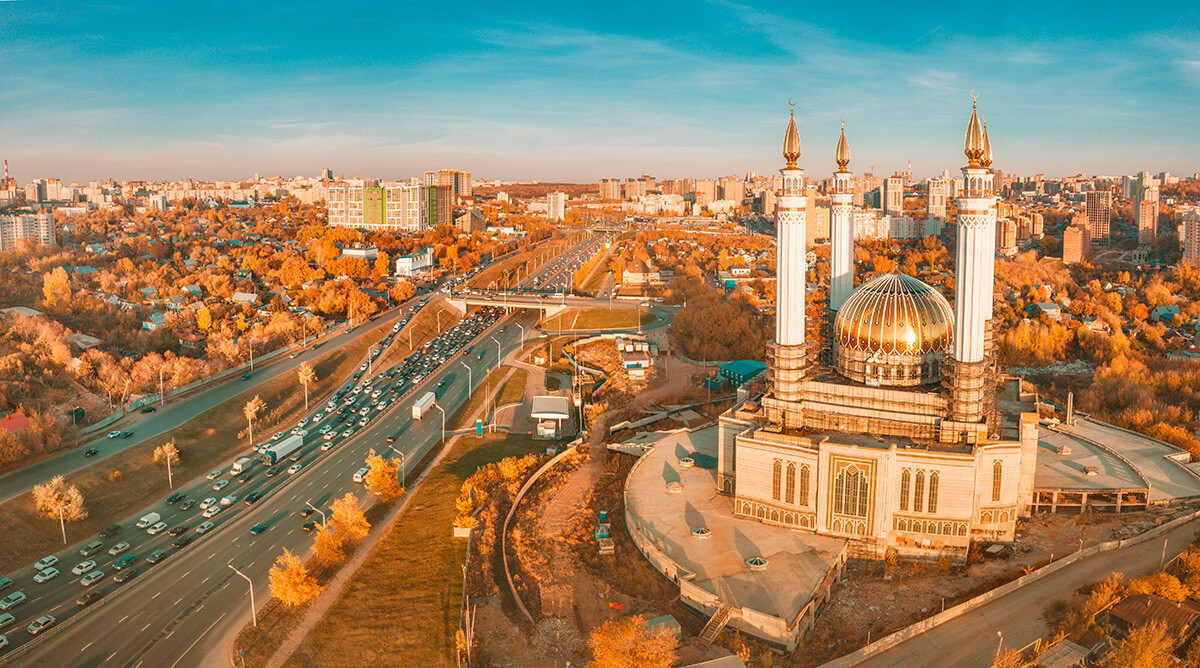
Aerial view of islamic mosque near a busy highway in Ufa.
frantic00/Getty ImagesThe capital of the Republic of Bashkortostan is one of the greenest cities in the Urals. There are dozens of small city parks, as well as several forests, arboretums, a botanical garden and even a lemonarium (lemon tree nursery), where all kinds of citrus fruits are grown.
The city, meanwhile, was founded back in the 16th century. Today, its economy is mainly based on the petrochemical industry.
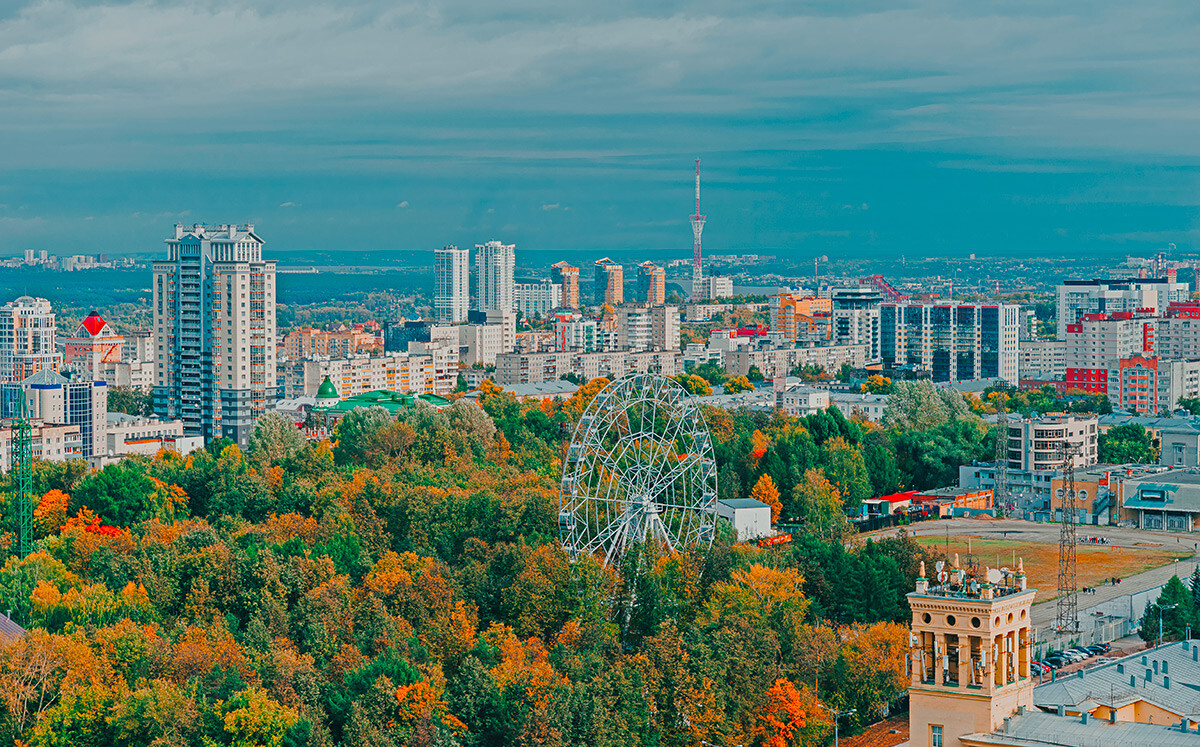
View of the central park of Perm from a height.
Aleksei Savin/Getty ImagesThe history of the city began with the construction of a copper smelting plant in 1723. Already in the first half of the 19th century, Perm became an important transportation hub. The main commodity was salt, which was mined there in large quantities (even the names of the cities point to the "salt" roots, namely Usolye, Solikamsk).
During the Great Patriotic War, more than 120 industrial enterprises were evacuated to Perm and its surrounding cities, making it one of the key industrial centers in the USSR.
Today, the city is also one of the cultural hubs of Russia. The Perm Opera and Ballet Theater is the only venue in Russia where ten operas and three ballets to Pyotr Tchaikovsky's music were staged. The city's art gallery displays unique wooden sculptures from the Russian North, and the PERMM Museum of Contemporary Art is also open to the public (read more here).
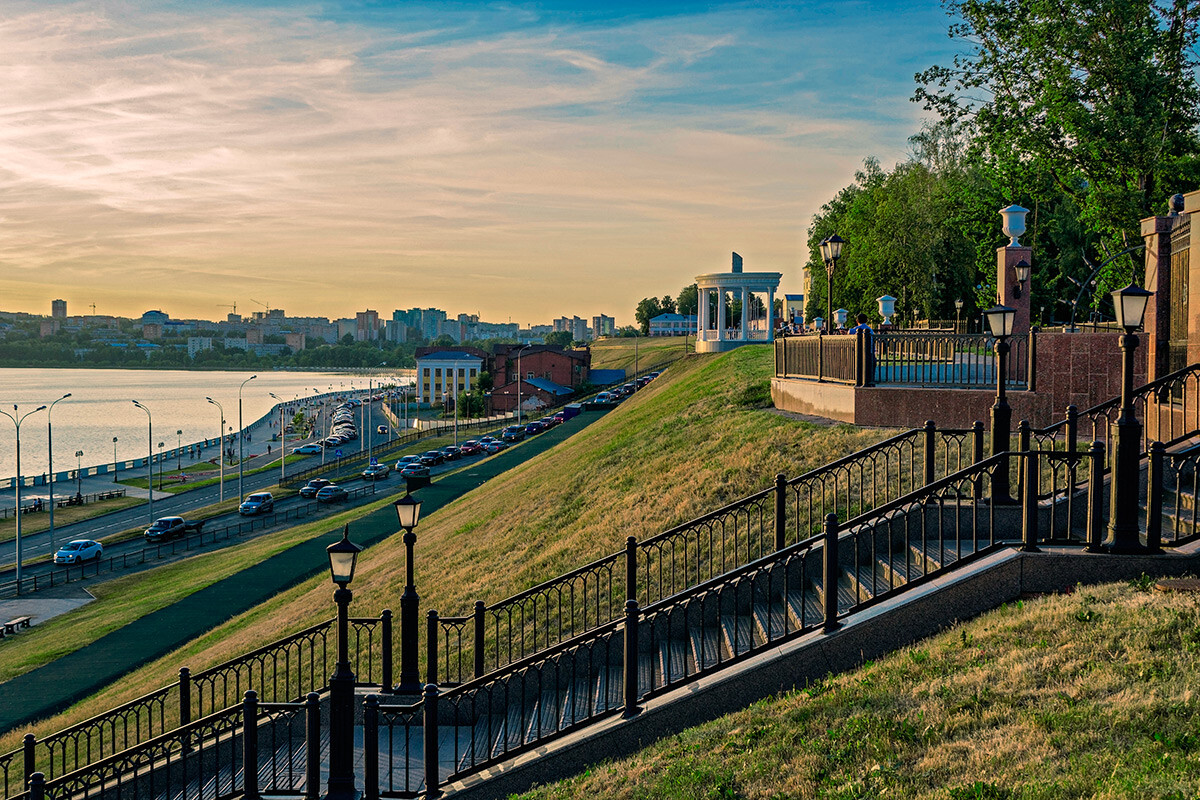
View of the embankment of Izhevsk in the evening.
Alx_Yago/Getty ImagesWhat do you think the capital of Russia and the capital of Udmurtia have in common? That's right – both cities have Red Squares! True, the Izhevsk central square was called Mikhailovskaya Square, because the Mikhailovsky Cathedral stood next to it. But, in 1918, it was renamed Red Square and, a few years later, a monument to Red Army soldiers was erected there. In the early 2000s, the Mikhailovsky Cathedral, destroyed by the Bolsheviks, was restored to its original plot on the square.
Izhevsk, founded in 1760, is known as the "arms capital" of Russia, primarily because of the JSC Kalashnikov Concern located there.
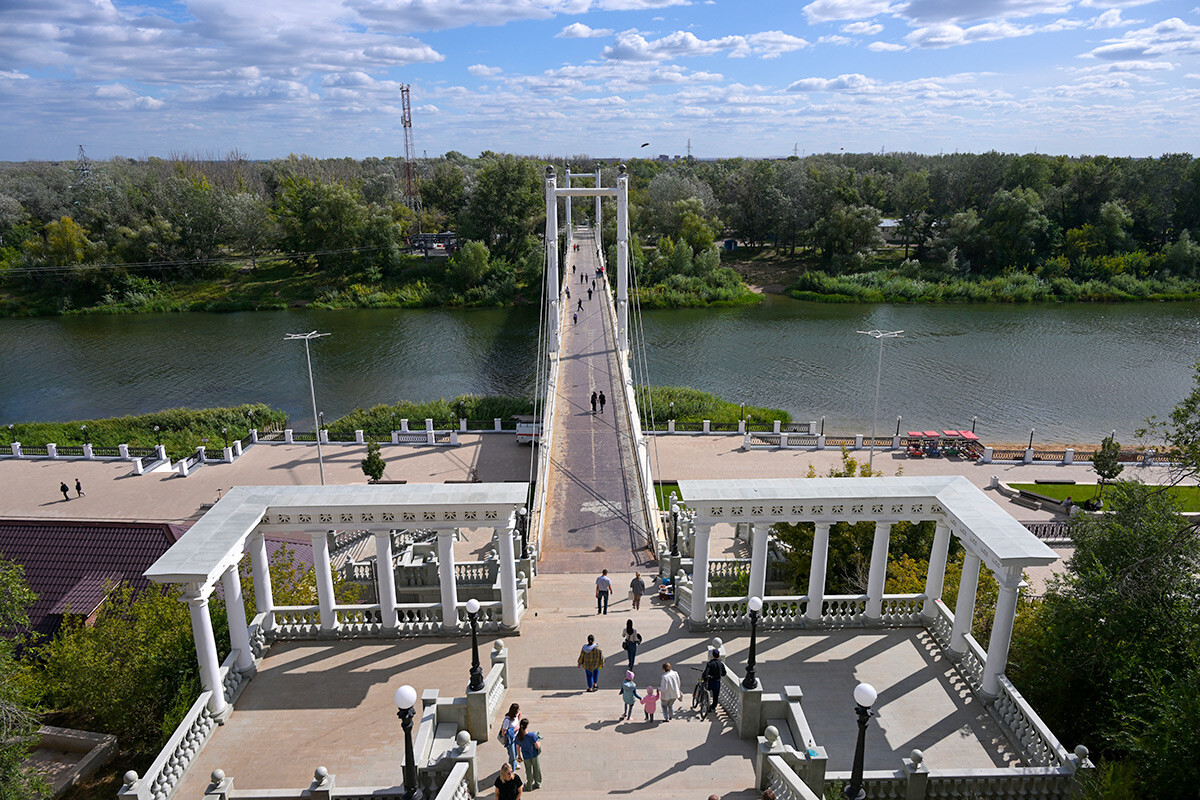
The Europe-Asia pedestrian bridge over the Ural River in Orenburg.
Yevgeny Biyatov/SputnikShawls made of goat down, which are knitted in Orenburg, are considered one of the symbols of Russia, along with matryoshka dolls and the balalaika. They are weightless, but still extremely warm. It's all down to the local breed of goats, which can only be found in this region. Their down is the finest in the world and particularly durable. At the same time, Orenburg remains an industrial center of the Urals: a number of gas production and gas processing enterprises are located there.
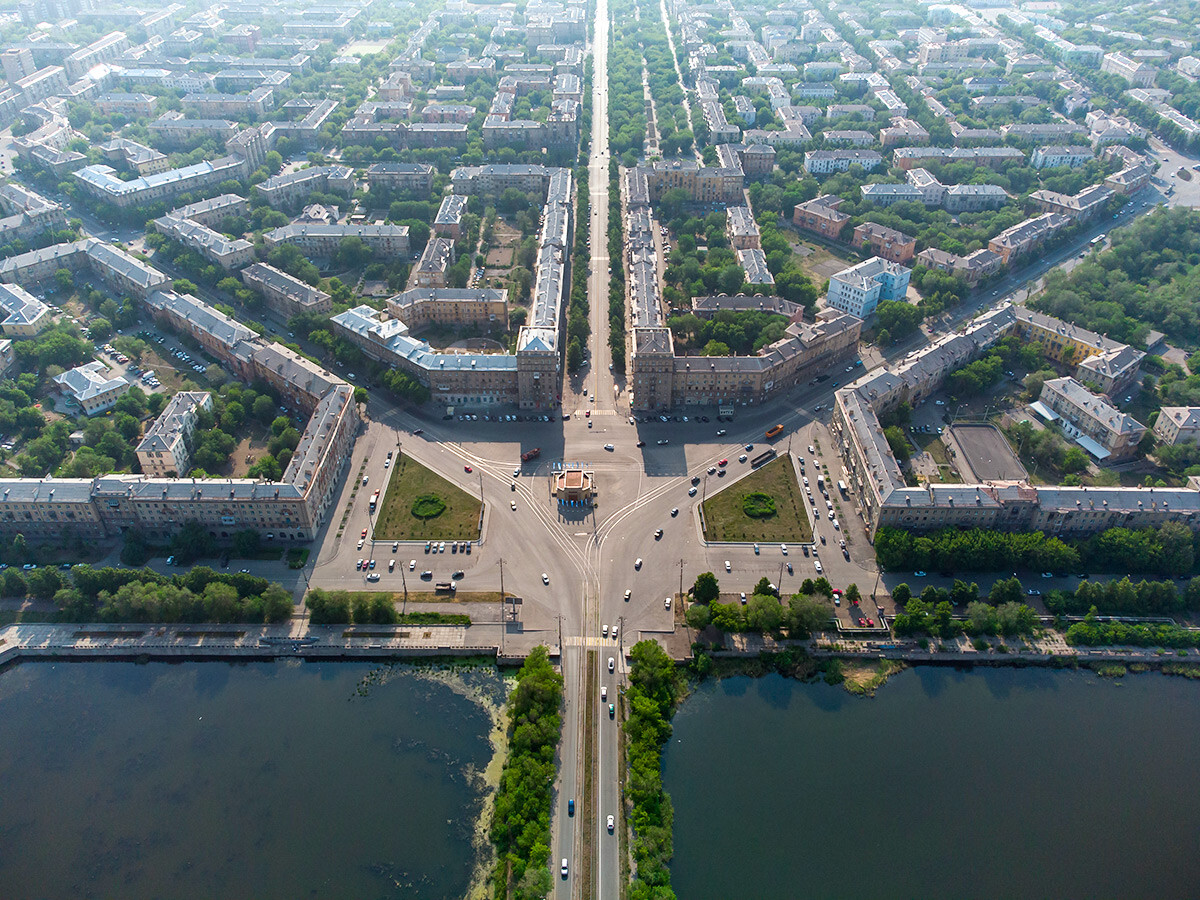
Magnitogorsk from above.
Maxim Shmakov/Getty ImagesMagnitogorsk is the second largest city in Chelyabinsk Region. It is the center of ferrous metallurgy. In 1931, Magnitogorsk became one of the first social cities in the country, which were built in the vicinity of large industrial plants. City quarters had not only to quickly solve the problem with housing for workers, but also become a model of the new proletarian lifestyle. Famous German architect Ernst May was the one who inspired and had a hand in the city’s construction (read more here).
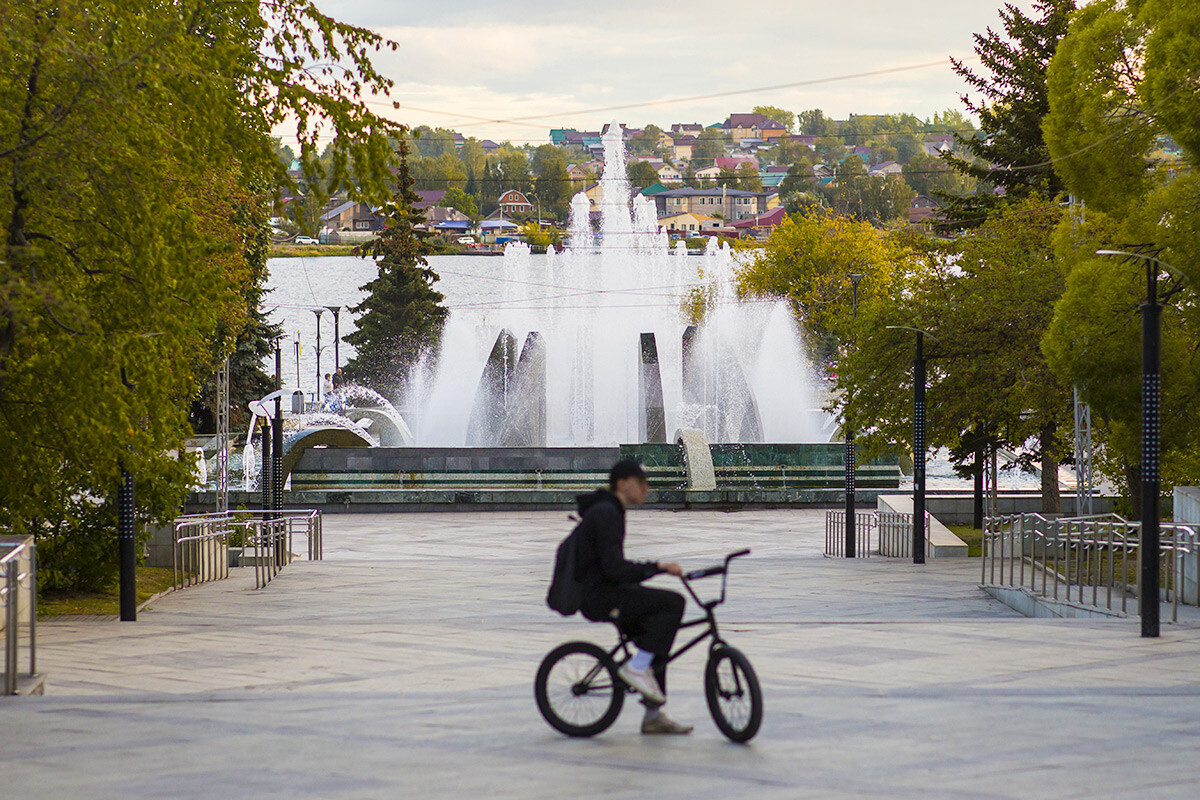
Music fountain at Tagil's Theater Square.
М. Konankov/Octagon.Media/TASSThis is the second largest city in Sverdlovsk Region (after Yekaterinburg). It owes its existence to copper and iron ore deposits discovered there in the early 18th century. In addition to various ferrous metallurgy products, armaments for the Russian army and freight cars are manufactured there.
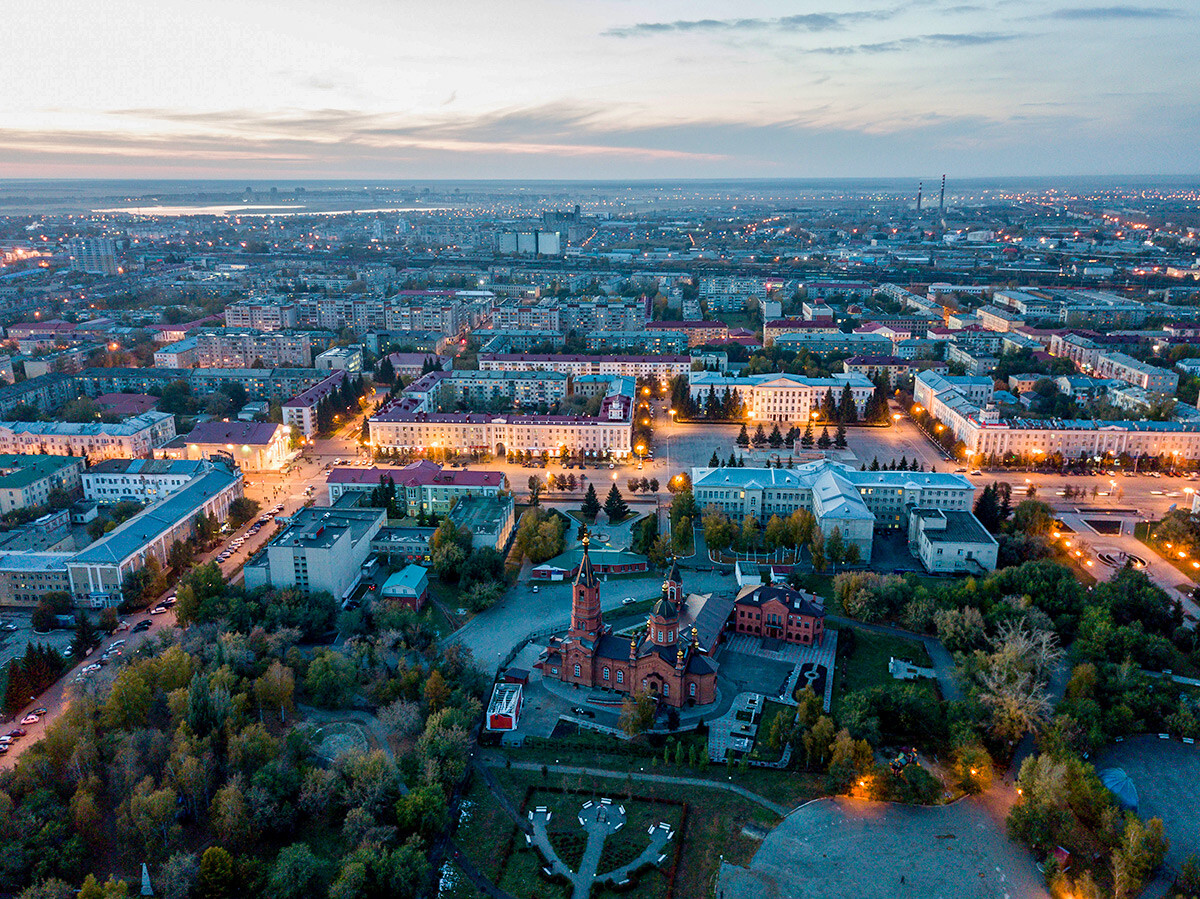
Lenin Square and the City Garden in Kurgan.
Alexei Malgavko/SputnikAccording to the official history, Kurgan was founded in 1679 by a peasant named Timofey Nevezhin, while Catherine II granted it the status of a city in 1782.
Kurgan is the administrative center of Kurgan Region. There is located the world-famous center of traumatology and orthopedics named after Gavriil Ilizarov, the academician who invented the device for the fusion of bone fractures.
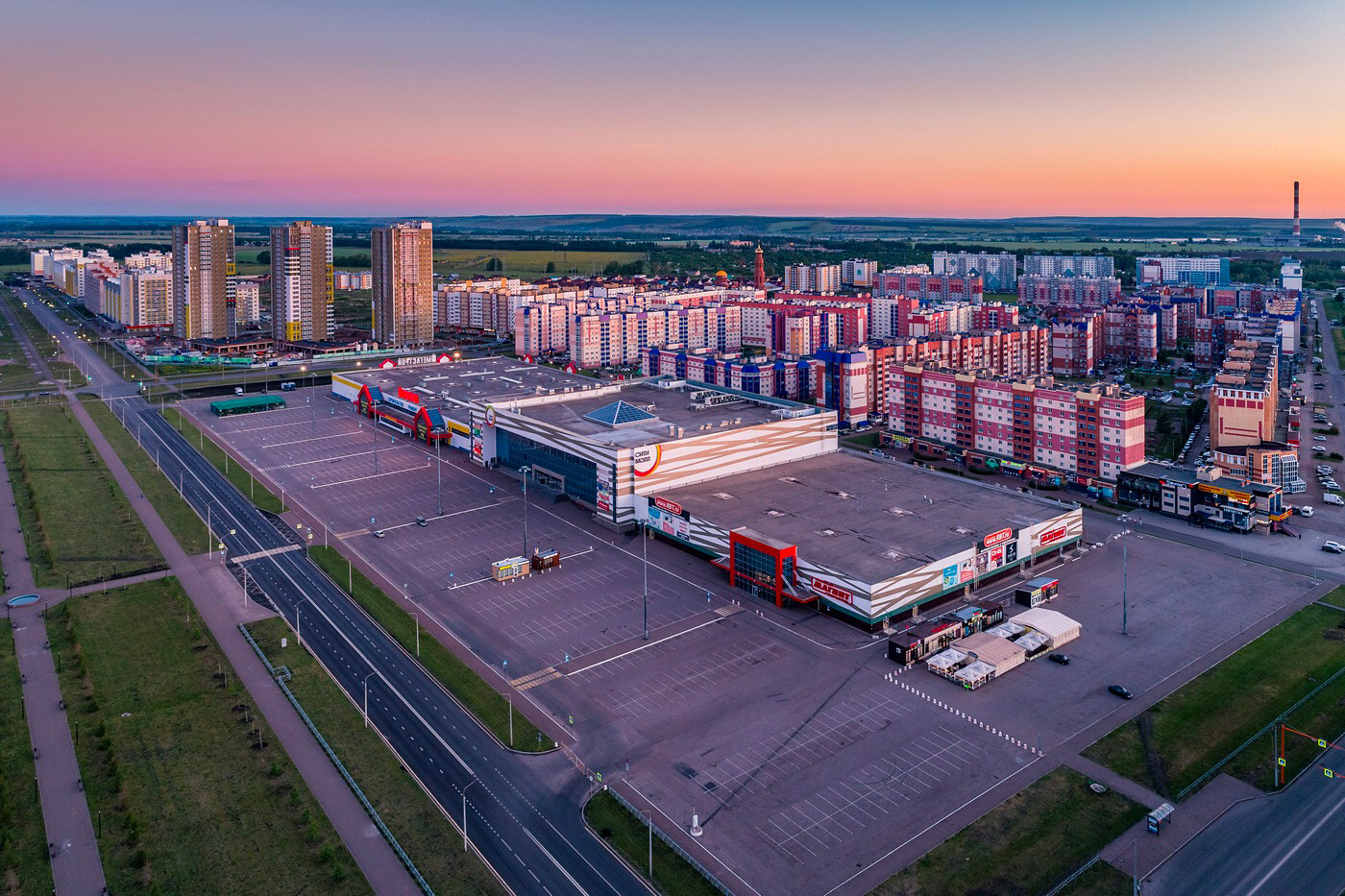
Local mall in Sterlitamak.
Cherdyn (CC BY-SA)In the 18th century, Sterlitamak began to develop rapidly, due to the construction of a "salt wharf": commercial caravans with salt would pass through it. The old merchant houses, which have survived to this day, point to the fact that the city was once quite wealthy.
Today, Sterlitamak is the second most populous city in Bashkortostan and is a center of the country's chemical industry, in common with Ufa.
Dear readers,
Our website and social media accounts are under threat of being restricted or banned, due to the current circumstances. So, to keep up with our latest content, simply do the following:
If using any of Russia Beyond's content, partly or in full, always provide an active hyperlink to the original material.
Subscribe
to our newsletter!
Get the week's best stories straight to your inbox